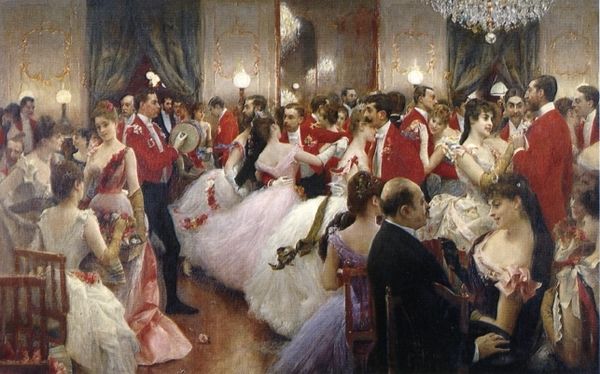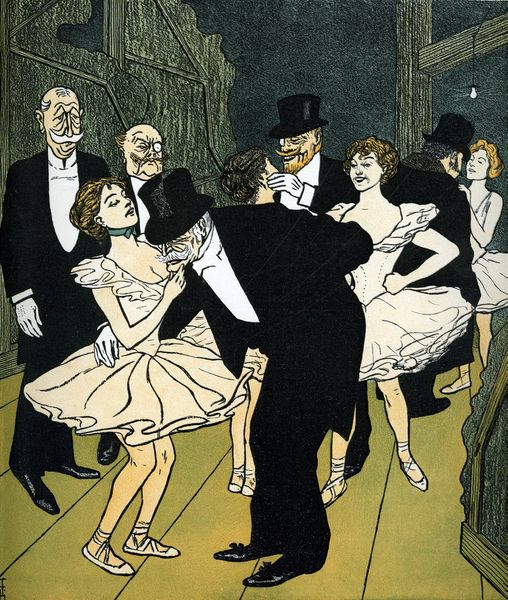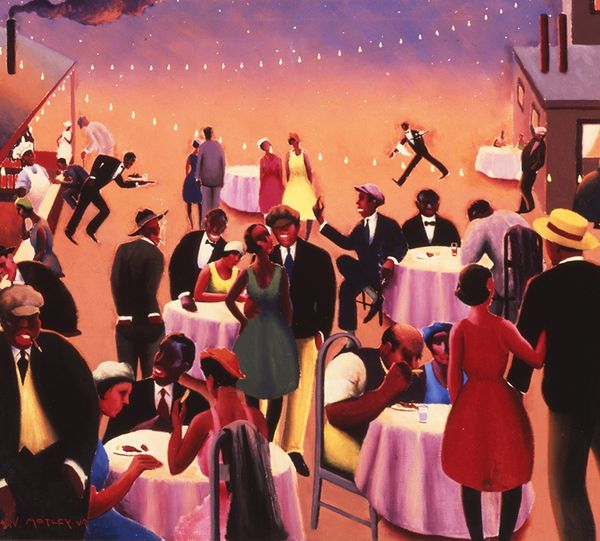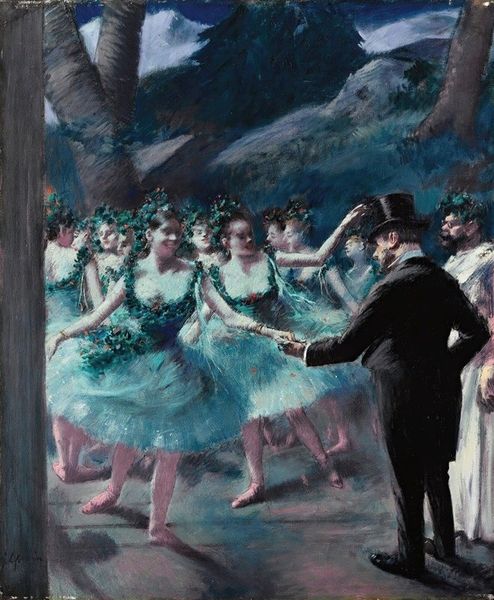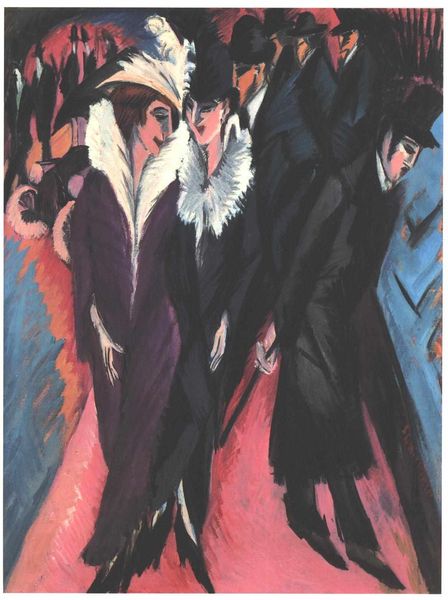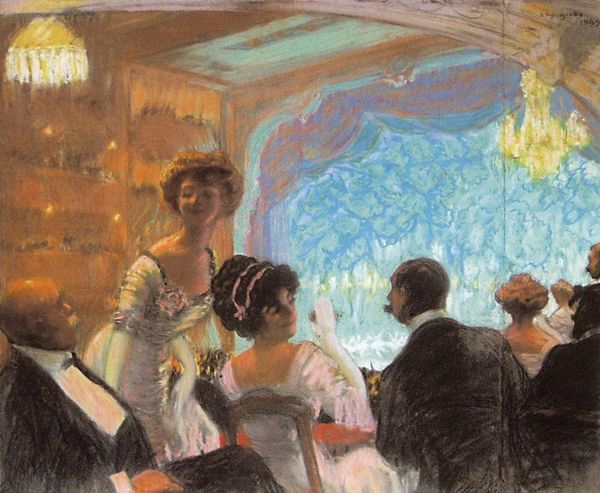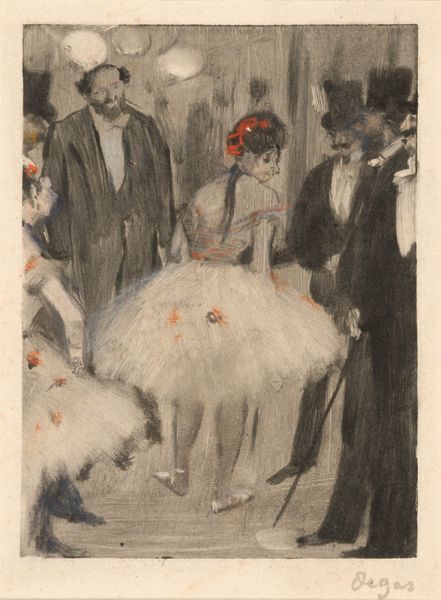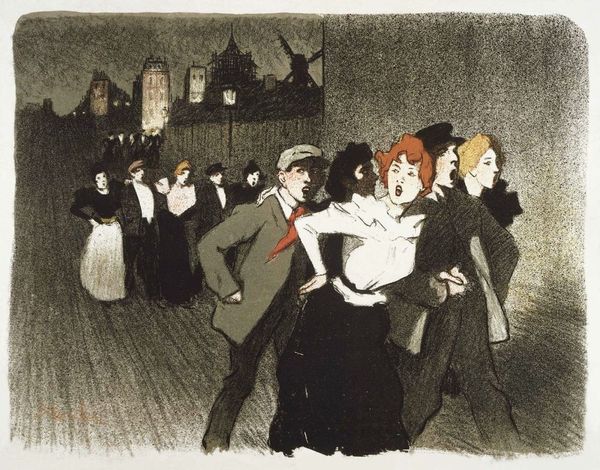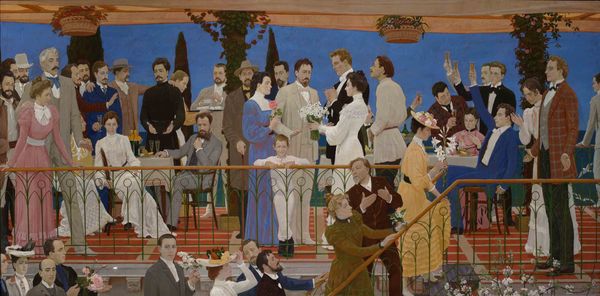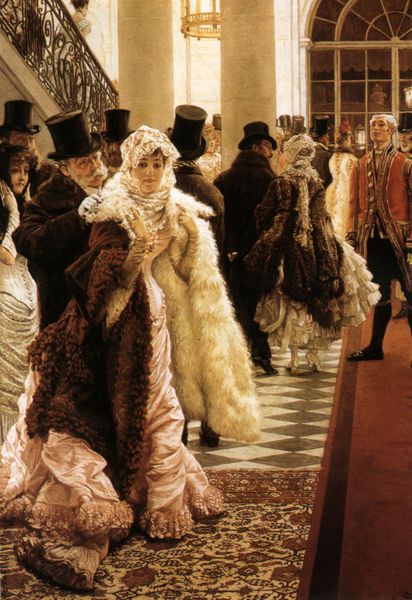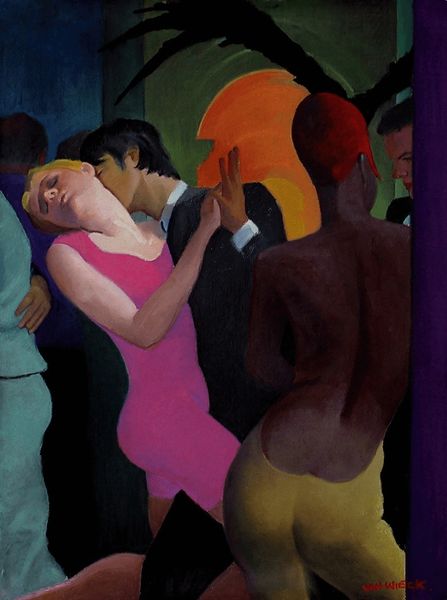
oil-paint
#
portrait
#
baroque
#
oil-paint
#
oil painting
#
cityscape
#
genre-painting
Copyright: Modern Artists: Artvee
Curator: Here we have "Masked Ball" by Nigel Van Wieck, painted in oils. It’s a scene full of obscured identities and implied social rituals. What's your initial take? Editor: My immediate sense is one of slightly uneasy festivity. The colors are muted, even somber, despite the apparent revelry. It feels… secretive. Curator: Absolutely. The masks serve as powerful symbols here. They both conceal identity and permit certain behaviors under the guise of anonymity, tapping into ideas around social roles and personal expression. Think about carnivals and how masking was associated with political protest. Editor: I'm drawn to the figure with the rabbit mask in the background. Rabbits have such layered symbolism. Fertility, certainly, but also vulnerability, even fear. Its presence alters the whole dynamic. Curator: It’s fascinating how Van Wieck uses that specific costuming element to subvert expectations within genre painting. Masked balls traditionally showcase aristocratic leisure and spectacle, but that rabbit adds a layer of the uncanny. How can this painting's Baroque influences enhance its political or cultural meaning? Editor: The Baroque element seems clear in the dramatic lighting and sense of theatricality. Light and shadow have symbolic meaning. The shadowy figures on the edges represent moral ambiguities and possibly dangerous hidden agendas. Curator: Consider the figures clustered in the middle ground. Is this work ultimately a social commentary on hidden privilege and how wealth obscures certain power dynamics? Or perhaps this simply a snapshot of bourgeoisie frivolity, untouched by social concern? Editor: I feel that the painting speaks to anxieties around authenticity and social interaction. There is so much hidden beneath the costumes here, like psychological dramas waiting to unfold. Curator: The brilliance of "Masked Ball" lies in its ability to resonate on both the historical and personal levels. The masks prompt us to consider who we are beneath the surfaces of our own lives. Editor: I concur. The piece invites us to reflect on what it means to be seen, and perhaps more importantly, what it means to truly see.
Comments
No comments
Be the first to comment and join the conversation on the ultimate creative platform.

